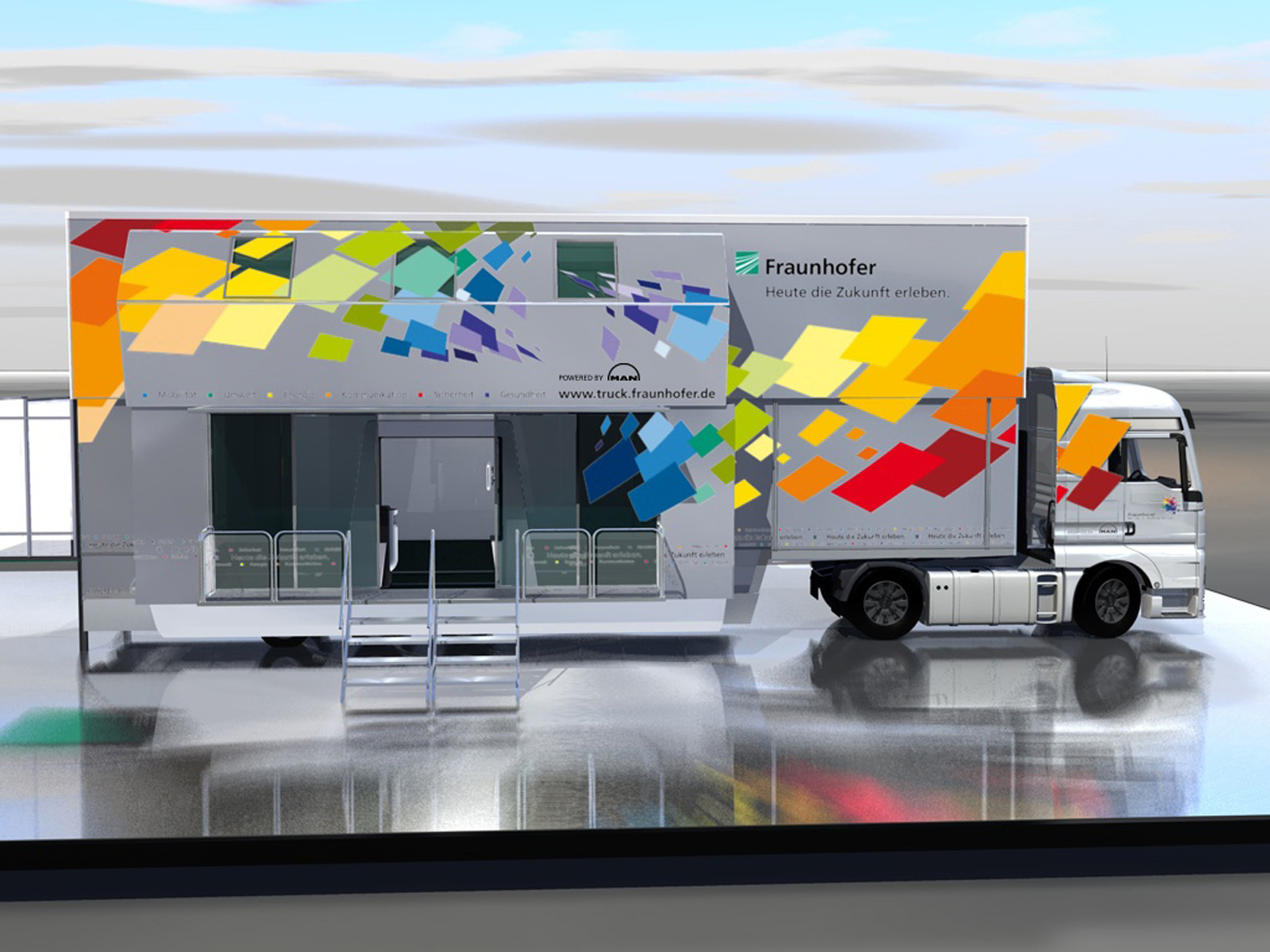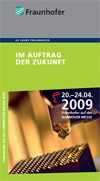Fraunhofer at the Hannover Messe - Dedication to the Future
The Fraunhofer-Gesellschaft is celebrating its 60th anniversary this year. Fraunhofer’s innovative strength, combined with intelligent marketing, is a key ingredient in many new products. With six joint exhibits and numerous individual presentations, more than 35 Fraunhofer Institutes will be showcasing new technologies at this year’s Hannover Messe.
People need health, mobility, environment, security, communications and energy. Fraunhofer scientists are constantly striving for innovative solutions in all these fields. And it is people, with their needs and wants, who are always at the very heart of their work: What products, technologies and processes will make life easier, more secure, more worth living? Fraunhofer will be presenting selected innovations in an eye-catching format inside the Fraunhofer Truck in Hall 2 (Stand D22). How can new technologies help us to use energy and resources as efficiently as possible, both today and in the future? Fraunhofer has made this an overarching theme for this year’s Hannover Messe. And resource-saving production methods – incorporating the use of new materials, for example – are every bit as much a part of this as the efficient use of energy. At the joint Fraunhofer exhibit for adaptronics in Hall 2 (Stand D34), scientists will be demonstrating how active measures can be used to reduce vibrations and noise. Lots of machines and equipment shake, rattle and drone, and this has an adverse effect on technical performance, precision and the people who operate them. In order to remedy this, researchers are devising ways to ensure that mechanical disturbances are significantly damped and components are made to vibrate less, or make less noise. One example is an adaptronic mounting which insulates the vibrations from an air-conditioning compressor located on top of the driver’s cab of a tram and prevents them spreading. For the driver, it means less noise – and therefore less stress. He is more relaxed and able to concentrate better on his work. The Fraunhofer scientists are particularly concerned with offering cost-efficient and reliable solutions – their aim is to make technology increasingly exploitable and useful. At the joint exhibit for energy in Hall 13 (Stand E20), researchers will be presenting their design for a new biogas plant. Instead of running on edible raw materials, it runs purely on waste – e.g. corn straw residue – and shows how waste materials can become valuable resources. The plant produces 30 per cent more biogas than its predecessors – and three times as fast. Then a fuel cell efficiently converts the biogas into electricity. The researchers have already built a pilot plant that produces 1.5 kilowatts of electrical power – enough for a private home. In the next phase of the project, the intention is to scale up the plant to two megawatts. Another major theme at this stand will be the concept of E-energy, or the “energy Internet”. Here, the idea is that intelligent power grids will in future identify the shortest link between producers and consumers, thus saving energy. The stand will also feature energy storage facilities for wind and solar energy, and e-mobility too. In addition to electrical power and drive engineering, Fraunhofer scientists are also researching electrical energy storage facilities and network integration. Wind power will take center stage at the joint Fraunhofer exhibit for wind energy in Hall 27 (Stand G20). Power plant manufacturers, production engineers, developers of non-destructive test procedures and mathematicians who simulate energy yield are currently all working together in interdisciplinary teams to gather data covering the entire lifecycle of a wind turbine and optimize its performance. In particular, they are focusing on the various possible test methods – e.g. infrared thermography. This technique enables material defects such as air inclusions to be detected quickly and cheaply. The scientists will demonstrate the technology using a rotor blade section in which they have incorporated a number of typical defects. Researchers at the new Fraunhofer Institute for Wind Energy and Energy System Technology IWES have specialized in oversized material testing. A building 85 meters long and 25 meters high has been erected so that rotor blades can be tested – one of the largest test facilities in the world. Fraunhofer researchers can also boast some spectacular results in the field of surface technology. At the joint exhibit in Hall 6 (Stand F48), they will use a car to illustrate the diverse and highly practical applications of the latest surface coating systems. The new surfaces are scratch-resistant, self-cleaning, less prone to corrosion and anti-glare. Other main areas of work include tribological coatings on components and tools, micro- and sensor technology, simulation-based coating and process development, and photocatalysis. Simulation-based product and process development will be the main focus at the joint Fraunhofer exhibit for simulation in Hall 17 (Stand D60). Nowadays, state-of-the-art supercomputers can simulate products and production processes in a matter of minutes. The need for real-life tests – such as crash tests – can thus be reduced to a minimum, saving on costs and radically shortening product development times. The researchers will be exhibiting software that simulates assembly paths and even factors in the pliability of components. It means workers can now mount components that only exist in the form of CAD data into a new model of car in a virtual world. Another example is the PRODAMI tool, which data experts are using to develop methods that permit targeted diagnosis of faults in production plants. It allows potential component failures to be predicted and rectified before they occur.

